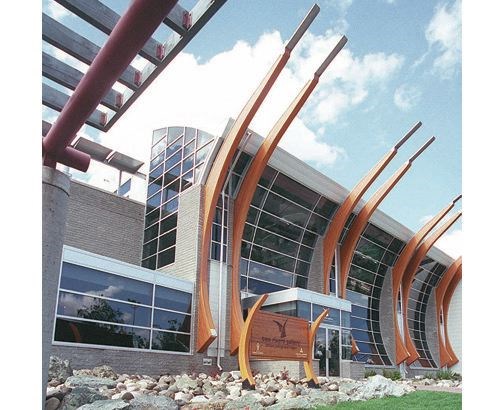Art is communication.
Art is expressing one's self. The best artists are the ones who say with their art the things broad groups of us were thinking about, or dreaming about, and, perhaps, didn't even have formal wording for. That might be simply a direct expression of love for nature, or an urban landscape or a single person; it might go much deeper into the meaning of society itself.
Sometimes art is the echo of those thoughts and emotions, and sometimes it is the original call.
A spirited discussion is expected tonight about the place of art in the calls to action and the echoes of understanding. A table of articulate voices has been assembled by the Two Rivers Gallery.
"We are hosting a panel discussion at the gallery in partnership with UNBC and Pacific Institute for Climate Solutions," said spokesperson Elsie Wiebe Klingler.
"It is entitled Art & Change: Perspectives on Creativity and Activism with an impressive line up of panelists."
The event will be moderated by Michelle Connolly, the co-ordinator for the Pacific Institute For Climate Solutions and a UNBC-based expert in forest ecology.
The four at the discussion table are:
Kym Gouchie (artist, musician, storyteller, and elder for the Lheidli T'enneh First Nation)
Helen Knott (poet, writer, activist, social worker from the Prophet River First Nation)
Nadia Nowak (activist for Sea To Sands Conservation Alliance, Friends Of Wild Salmon, etc.)
Bill Horne (longtime activist and artist, featured in the current gallery exhibition Behind The Lines)
Horne's exhibit was the physical catalyst for the public discussion.
His understanding is Connolly and gallery staff got talking one day and became the human catalysts.
"I was enthusiastic about it," said Horne from his studio and gallery in Wells called The Amazing Space shared with his life partner Claire Kujundzic, another artist who blends pointed social commentary with her creative pieces.
"Its a subject dear to my heart," Horne said. "I do other kinds of art as well: I have a series of landscapes on canvas, I've silkscreened plants, I've done book design for Chris Harris. My arts life has many branches, but I do enjoy combining activism with art."
He was especially gratified to have the idea revolve around Connolly, because he saw the marriage of art, activism and her science background as not readily connected on the surface, but tangled at the roots.
Science and art intrinsically informed each other, was his contention.
He also said science and art were pillars of public discourse that could be amplified by working together.
"We live in a culture where a lot of people are numb to what's going on in the world, and including some import issues right in our own region," said Horne.
"What artists can do is assist people in feeling joy or rage and be able to come out of their numbness and decided what they want to do about it. Art is there to feel a connection to what's going on around us, to shake loose the disconnection we all feel. There are songs that make us laugh, or cry, for example, and that's what all forms of art can do, to change our static mind and to encourage expression instead of just being silent in our thoughts."
The public forum is free and starts at 7:30 p.m. at the Two Rivers Gallery.



